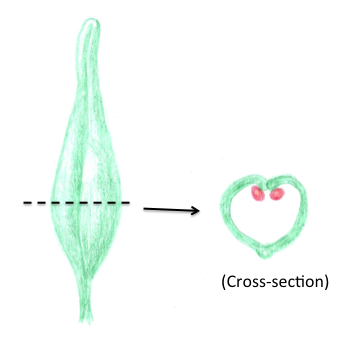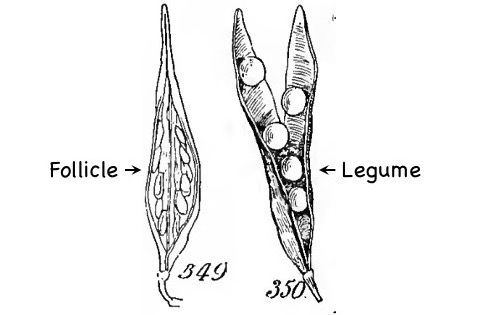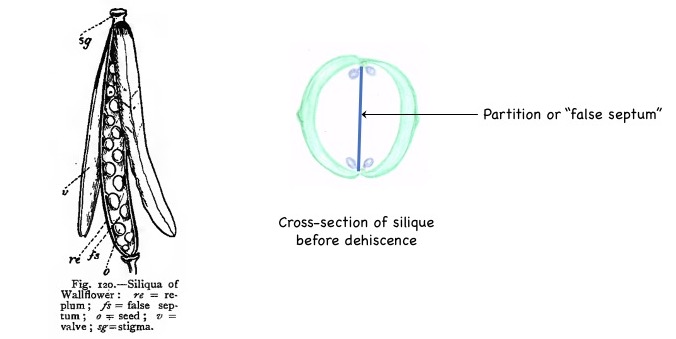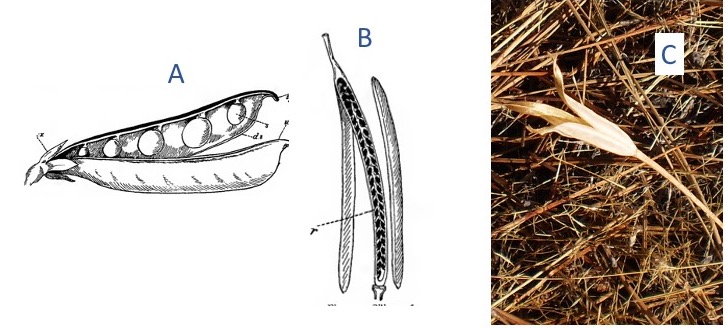Dry dehiscent fruits

Two types of dehiscent fruits are produced from ovaries that contain only one carpel.
If the fruit splits along only one side, it is a follicle.
If it splits along two sides, it is a legume.

A silique is a fruit that is peculiar to the mustard family (the Brassicaceae). It comes from a pistil with two carpels and parietal placentation. However, a partition in the fruit joins the two placentae. When the fruit dehisces, the valves (the sections of the fruit wall) split away, leaving the seeds attached to the partition.

(A short silique is called a silicle.)
Dehiscent fruits from pistils with multiple carpels are generally called capsules. Capsules may split open in different places:
- Capsules that release seeds through small pores have poricidal dehiscence.
- Capsules that split around their circumference and pop their top have circumscissile dehiscence.
- Capsules that form longitudinal slits to release seeds may split right through the middle of their locules: they have loculicidal dehiscence. Capsules that form longitudinal slits opposite the septa (partitions) in the ovary have septicidal dehiscence.

Check your understanding:
Three fruits are shown below:
